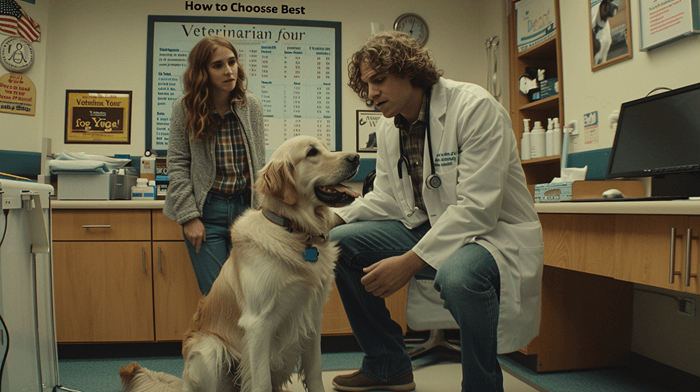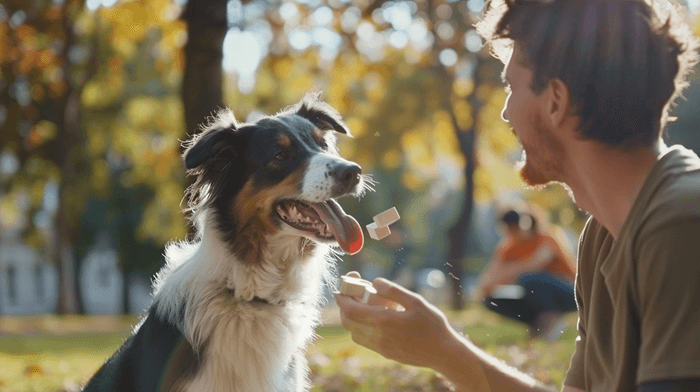
Why Debunking Dog Care Myths is Crucial
Caring for a dog is one of the most rewarding experiences a person can have. These loyal companions provide endless love, companionship, and joy. However, many dog owners unknowingly follow advice that could be harmful to their pets. Over the years, numerous myths about dog care have spread—many of them believed by even the most well-intentioned dog owners. From diet misconceptions to training techniques, these myths can affect your dog’s health, behavior, and overall well-being.
In this detailed article, we will debunk some of the most common dog care myths, backed by scientific research and expert recommendations. By understanding the truth behind these myths, you will be able to provide your dog with the best care possible, ensuring they lead a happy, healthy life. Whether you are a new dog owner or have had pets for years, there is always something new to learn about giving your furry friend the care they deserve.
The Importance of Understanding Dog Care Myths
Dog care myths can seem harmless, but in reality, they may cause long-term harm to your pet. From misunderstanding nutritional needs to believing that certain behaviors should be punished harshly, myths can lead to poor health outcomes and behavioral issues. Here are five key reasons why understanding and debunking these myths is so important.
1. Extending Your Dog’s Lifespan

One of the primary reasons for debunking myths is the potential to extend your dog’s lifespan. Misconceptions about nutrition, exercise, and medical care can lead to serious health issues. For example, many dog owners mistakenly believe that feeding their dog a raw or homemade diet is always healthier than commercial dog food. However, improper balance of nutrients can result in deficiencies that affect a dog’s health over time. By understanding your dog’s actual dietary needs, you can help them live a longer, healthier life.
2. Preventing Behavioral Problems
Behavioral issues in dogs are often attributed to myths such as «dominance theory» or the belief that dogs act out of spite. These misconceptions can lead to improper training methods and unnecessary punishments. In reality, most behavioral problems are rooted in anxiety, lack of stimulation, or miscommunication between dog and owner. By focusing on positive reinforcement and understanding the real causes of your dog’s behavior, you can prevent or correct issues like excessive barking, aggression, or destructive chewing.
3. Improving Your Dog’s Physical Health
Physical health is directly tied to your understanding of proper care. For instance, many people believe that certain breeds don’t need much exercise, or that table scraps are fine for dogs to eat. These myths can contribute to obesity, heart disease, or even toxic poisoning in dogs. Understanding the truth about what your dog needs in terms of exercise and nutrition will ensure they remain fit, healthy, and energetic well into their senior years.
4. Strengthening Your Bond with Your Dog
Proper care isn’t just about keeping your dog healthy—it’s also about building a strong, trusting bond with them. When you approach your dog’s care from a place of understanding rather than misconception, you create a more harmonious relationship. Dogs thrive on clear communication and consistent routines. By applying the correct methods for training, grooming, and health care, you can foster a deeper connection with your dog, based on trust and mutual respect.
5. Avoiding Expensive Health Problems
Many myths about dog care can lead to expensive vet bills down the road. For example, the belief that dogs don’t need dental care can result in costly procedures to address gum disease or tooth extractions. Similarly, skipping flea and tick preventatives because you believe these pests are seasonal can leave your dog vulnerable to diseases like Lyme disease or heartworm. By understanding and implementing proper care practices, you’ll save yourself money in the long term and keep your dog healthier in the process.
Debunking the Most Common Dog Care Myths
Let’s dive into some of the most persistent dog care myths and reveal the truth behind them. Each section below will address a specific myth and explain why it’s incorrect, providing you with accurate, science-backed information to ensure you’re giving your dog the best possible care.
Myth #1: «A Dry Nose Means My Dog is Sick»

Many dog owners panic when they notice that their dog’s nose is dry, assuming it’s a sign of illness. However, this is a myth. A dog’s nose can change from wet to dry throughout the day depending on several factors, including the weather, their level of activity, and even the humidity in the environment. A dry nose does not necessarily indicate a fever or illness. In fact, a dog can have a perfectly dry nose and still be completely healthy. What’s more important to watch for are changes in your dog’s behavior, appetite, or energy levels.
Myth #2: «Dogs Eat Grass Because They’re Sick»

One of the most widespread myths is that dogs eat grass only when they are feeling unwell or trying to induce vomiting. While it’s true that some dogs may vomit after eating grass, most dogs simply enjoy the texture and taste. Grass eating is a common behavior in dogs and is not necessarily an indicator of illness. In fact, studies have shown that fewer than 10% of dogs vomit after eating grass, and less than 25% show signs of illness before consuming it. Therefore, while it’s always good to monitor your dog’s overall health, eating grass is typically a harmless behavior.
Myth #3: «Dogs Feel Guilty When They Do Something Wrong»
This myth stems from the human tendency to anthropomorphize dogs. When dogs display submissive behaviors such as avoiding eye contact or lowering their heads, many people interpret this as guilt. In reality, dogs don’t experience guilt the way humans do. These behaviors are more likely a response to the owner’s body language or tone of voice, which the dog interprets as signs of displeasure. Rather than associating their actions with wrongdoing, dogs are simply reacting to their owner’s emotions.
Myth #4: «You Can’t Teach an Old Dog New Tricks»
The saying «you can’t teach an old dog new tricks» is one of the most damaging myths in dog care. The truth is that dogs of all ages are capable of learning new behaviors and commands. Older dogs may require more patience and consistency, but with positive reinforcement, they can successfully learn new skills. In fact, continued training and mental stimulation can help senior dogs stay sharp and improve their quality of life.
Myth #5: «Dogs Are Fine with Only One Annual Vet Visit»

Some dog owners believe that a single annual visit to the veterinarian is sufficient for their pet’s health. While this may be true for young, healthy dogs, most dogs benefit from more frequent check-ups—especially as they age. Senior dogs, in particular, should visit the vet at least twice a year to catch any early signs of disease or discomfort. Additionally, some conditions, such as dental disease or joint problems, may require more regular monitoring and treatment.
A Step-by-Step Guide to Proper Dog Care: From Nutrition to Training
If you’re ready to improve your dog’s health and well-being by debunking common myths, here’s a step-by-step guide on how to provide proper care.
1. Feed a Balanced Diet
Contrary to popular belief, not all dog foods are created equal. Look for high-quality food that lists real meat as the first ingredient. Be wary of commercial dog foods with fillers like corn or soy, as they can lack essential nutrients. Additionally, consult with your veterinarian about the best food options based on your dog’s age, breed, and activity level.
For dog owners who believe in the myth that raw diets are always healthier, it’s important to consult a vet or canine nutritionist before switching to raw food. An unbalanced raw diet can lead to nutritional deficiencies or expose your dog to harmful bacteria.
2. Exercise and Mental Stimulation
Another common myth is that small dogs don’t need as much exercise. In reality, all dogs, regardless of size, benefit from daily exercise to maintain their physical and mental health. Even breeds known for being less active require mental stimulation through puzzle toys or interactive games. Long walks, play sessions, and obedience training can go a long way in preventing behavioral problems caused by boredom.
3. Regular Vet Visits and Preventative Care
One annual vet visit may not be enough to keep your dog healthy. Depending on your dog’s age and health status, semi-annual visits may be more appropriate. Routine exams allow vets to catch any early signs of disease, making treatment easier and less costly. Preventative care, such as dental cleanings, flea/tick prevention, and vaccinations, is crucial to long-term health.
4. Training with Positive Reinforcement
Avoid falling for myths that suggest you must be the «alpha» or dominate your dog to train them. Positive reinforcement, which rewards good behavior with treats, praise, or playtime, is far more effective. Punishment-based training methods often lead to fear and anxiety in dogs, which can exacerbate behavioral issues.
5. Grooming: It’s More Than Just Looks
Grooming is often seen as optional, especially for short-haired breeds, but all dogs benefit from regular grooming. Brushing helps remove dead hair, reduces shedding, and stimulates blood flow to the skin. Nail trimming and ear cleaning are also essential to prevent infections and injuries.
Common Mistakes Dog Owners Make (and How to Avoid Them)
Now that you’re equipped with the truth behind dog care myths, let’s address some common mistakes that even experienced dog owners make. These mistakes often stem from misinformation or outdated beliefs but can have lasting impacts on your dog’s health and happiness.
1. Feeding Human Food

Many people give their dogs table scraps, believing it’s harmless or even beneficial. However, some human foods, such as chocolate, onions, garlic, and grapes, are toxic to dogs. Even seemingly healthy options, like cooked bones, can pose a choking hazard or cause internal damage.
2. Skipping Dental Care
As mentioned earlier, one of the most overlooked aspects of dog care is dental hygiene. Failing to brush your dog’s teeth or provide dental chews can lead to plaque buildup, gum disease, and costly veterinary procedures. Make it a habit to brush your dog’s teeth at least three times a week and schedule regular dental check-ups with your vet.
3. Not Socializing Your Dog
Socialization is crucial for a well-adjusted dog. Dogs that are not exposed to various environments, people, and other animals during their formative months can become fearful or aggressive later in life. Enroll your dog in puppy classes or take them on regular walks in dog-friendly areas to ensure they are comfortable in different settings.
4. Ignoring Weight Management
Obesity is a growing problem in pets, and many dog owners don’t realize their pet is overweight until health issues arise. Regular weigh-ins at the vet and portion control at home are key to preventing weight-related problems like joint pain, diabetes, and heart disease.
5. Using the Wrong Training Methods

Many dog owners still rely on outdated methods like punishment or dominance-based training. These methods can cause more harm than good, leading to fear-based aggression or other behavioral issues. Stick with positive reinforcement techniques that reward good behavior rather than punishing bad behavior.
Conclusion: Caring for Your Dog the Right Way
Debunking dog care myths is an important step toward providing your pet with the healthiest, happiest life possible. By understanding your dog’s true needs and avoiding common misconceptions, you can ensure that they receive the best care in terms of diet, exercise, training, and health. Your dog relies on you to make informed decisions about their well-being, and the more you know, the better equipped you are to be the best dog owner you can be.
Ready to Take Your Dog’s Care to the Next Level?

If you’re serious about giving your dog the best care possible, don’t miss out on The Dog Trainer Bible. This comprehensive guide covers everything from basic obedience to advanced training techniques and expert advice on nutrition, grooming, and health care. Whether you’re a first-time dog owner or a seasoned pro, the Dog Trainer Bible has everything you need to raise a happy, well-behaved dog.
